Dunwich |
The Atlantis of Suffolk !! |
|
An Introduction to Dunwich in Suffolk |
In the Anglo-Saxon era Dunwich was the unofficial capital of England, with eight churches, a busy harbour and thousands of residents. Unfortunately, hundreds of years of exposure to the sea took away this prosperity. The water ate away at the rock, pulling most of Dunwich's buildings into the sea. Today the village houses just 100 people, but some proof of its past glories does remain, including the ruins of Greyfriars Abbey and a hospital for lepers. The village also has a local museum and a village pub.
From Dunwich you can walk north, to the larger village of Walberswick. It only takes an hour or so. You can choose the path along the beach, or the one through the marshes and woodland. This latter route is a small section of the Suffolk Coast Path, a much longer, 50-mile trail. Alternatively you can go south, through the lowland area of Dunwich Heath. It's owned by the National Trust, who preserve its colourful heather and rare birds. Marked trails provide easy access to the heath's best features. There's a sandy beach here too. Its crumbling cliffs provide clear evidence of Dunwich's continuing frailty.
|
Dunwich District Map |
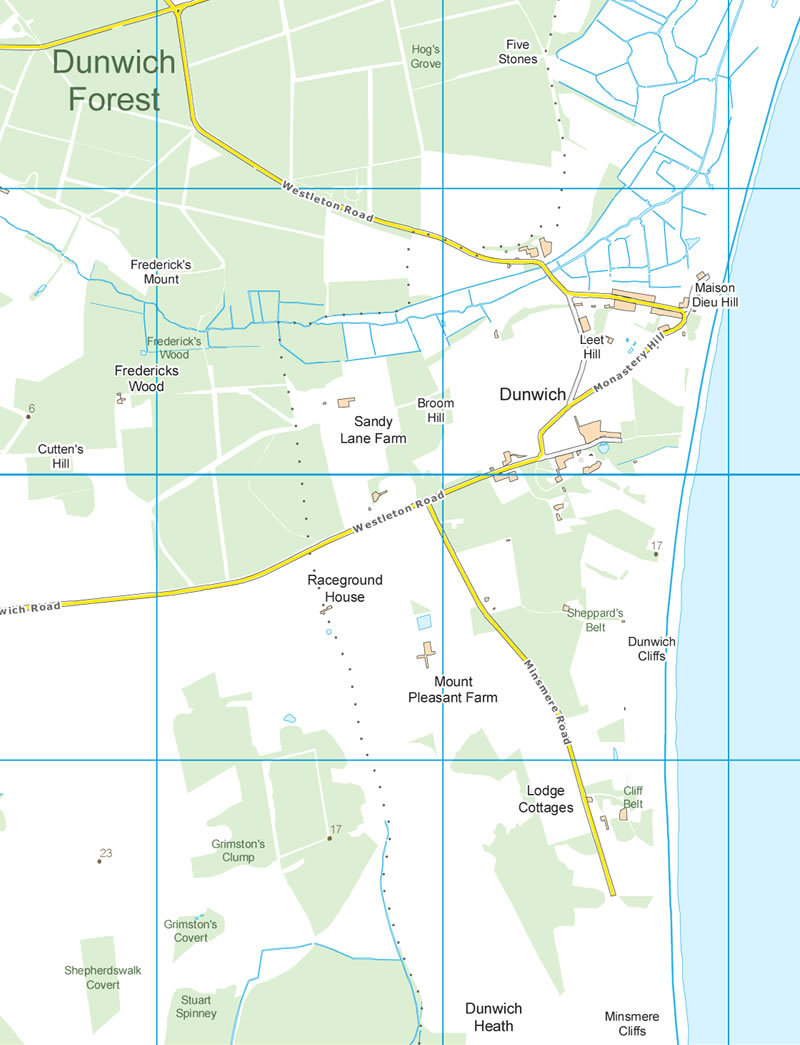 |
Dunwich Guided Picture Tour |
We start our tour of Dunwich on the the beach, which is a mixture of sand (north) gives way to pebbles (south), both backed by crumbling cliffs. At one time, from the top of the cliffs you would have been looking at a busy commercial port, but the constant battering of waves over the years, effected the coastline, taking away the port and with it, a great many houses from the village. |
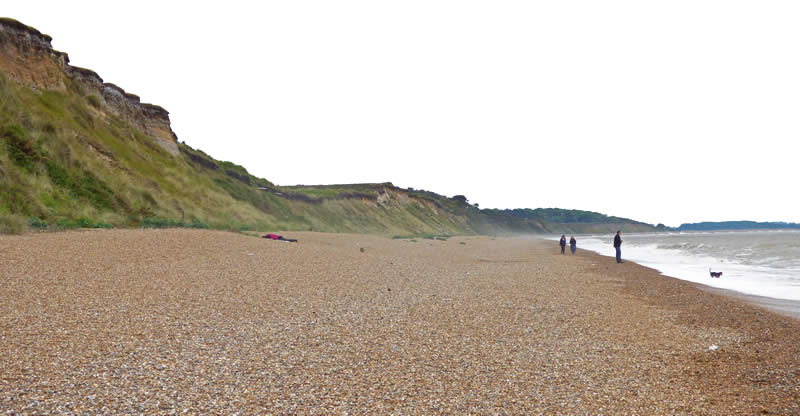
Dunwich Beach and Cliffs |
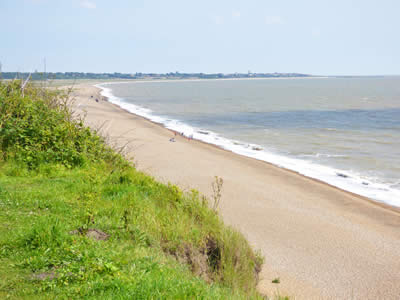
Dunwich beach looking north towards Southwold |
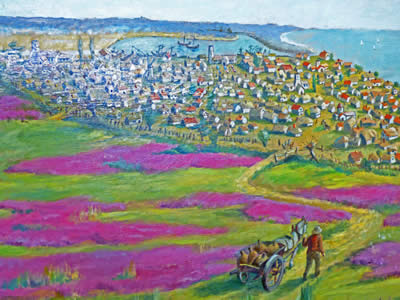
A painting showing a similar view during the middle ages |
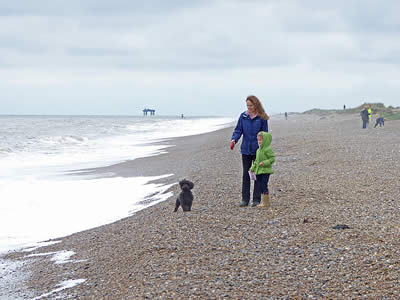
Dunwich beach looking south |
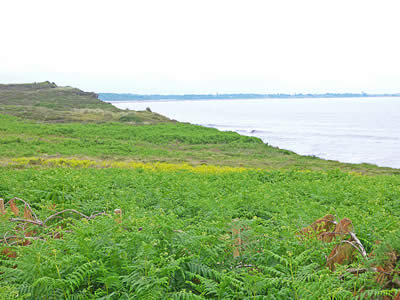
Dunwich Heath meets the sea |
Dunwich Heath is owned by the National Trust, who preserve its colourful heather and rare birds. Marked trails provide easy access to the heath's best features. There's a beach here too, part sandy, part pebbles. Its crumbling cliffs provide clear evidence of Dunwich's continuing frailty. The visitors centre incorporates a cafe. |
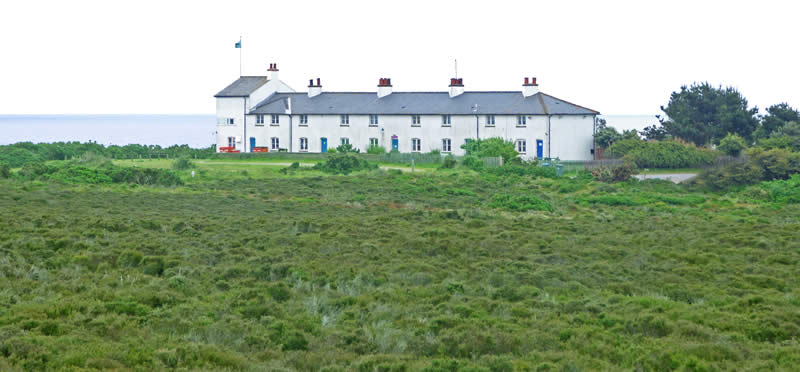
Dunwich Heath Visitors Centre and Cafe |
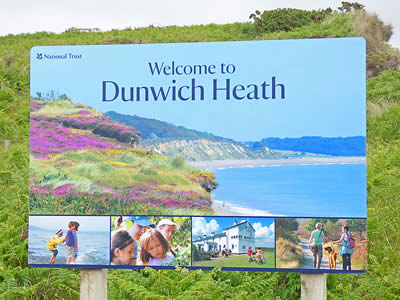
National Trust Dunwich Heath Sign |
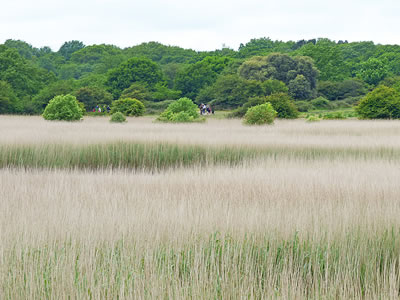
Walking on Dunwich Heath |
Today Dunwich village houses just 100 people, but some proof of its past glories does remain. There's only one church left, called St. James', with the remains of a chapel for lepers in the adjacent grounds. The Dunwich Museum has a model of the settlement at its 13th century peak, and exhibits covering the other parts of its journey. The village also contains a pub called 'The Ship'. |
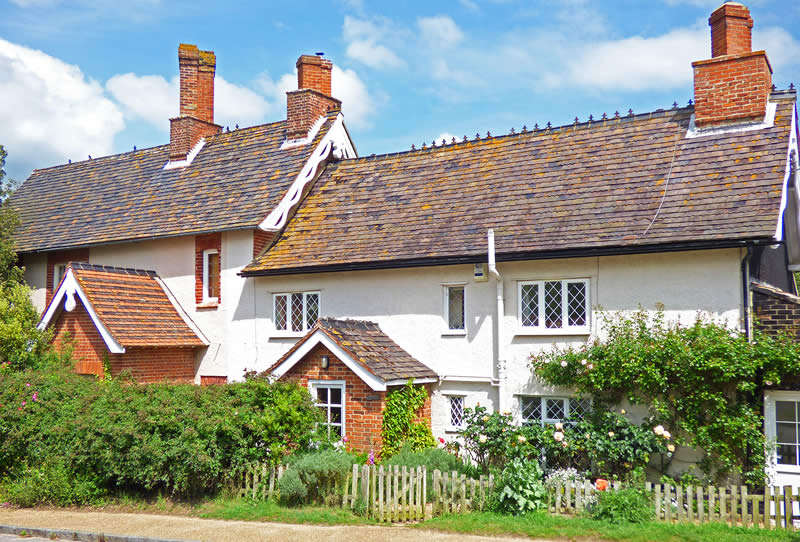
Cottages in the centre of the Dunwich village |
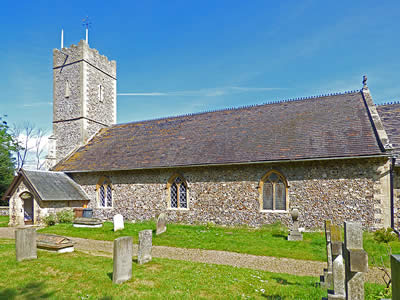
Dunwich Church of St James |
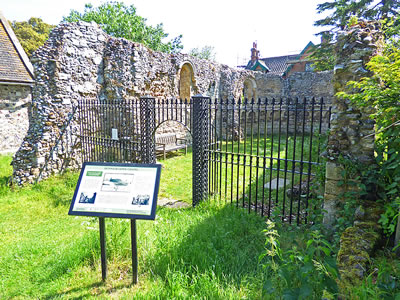
Dunwich Leper Chapel |
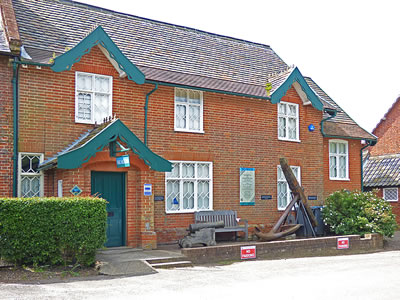
Dunwich Museum |
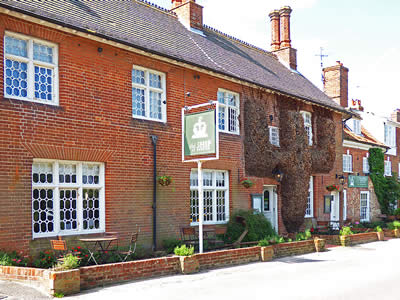
The Ship pub in Dunwich |
The ruins of Greyfriars Abbey can be found by taking taking a walk from Dunwich village along the cliff tops through Greyfriars Wood. The walk offers glimpses of the sea and takes you to the ruined walls of the abbey that you can explore. |
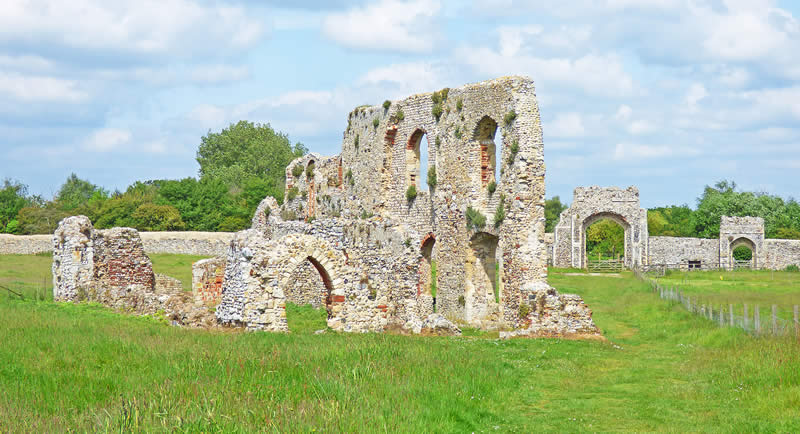
The ruins of Greyfriars Abbey |
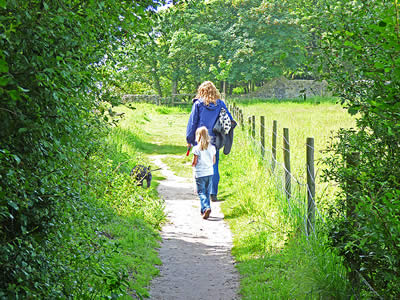
The path through Greyfriars Wood |
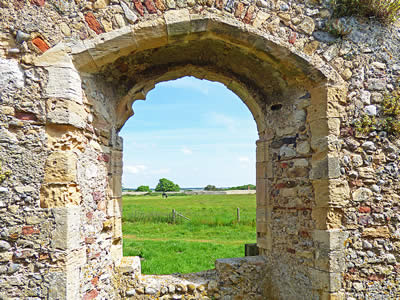
One of the arches of the ruined Abbey |
|
GUIDED TOUR INDEX |
|
|
|
|
|
|
VILLAGE SIGN |
|
SUFFOLK PICTURE TOURS |
|
|
|
|
|
|
|
|
|
|
|
MAPS TO DOWNLOAD |
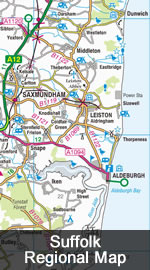 |
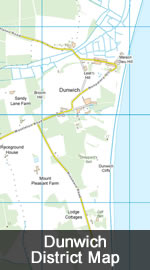 |
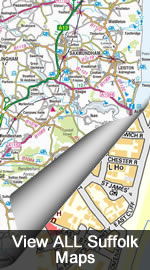 |
TOURIST ATTRACTIONS |
 |
WHERE TO STAY |
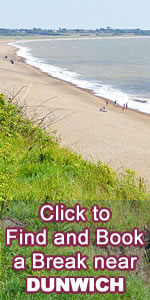 |
SUFFOLK HOLIDAYS |
 |
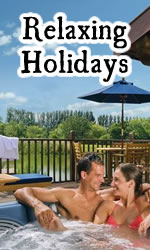 |
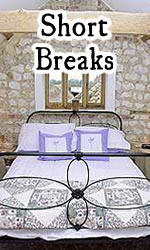 |
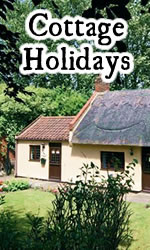 |
MORE OF OUR WEBSITES |
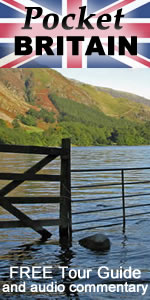 |
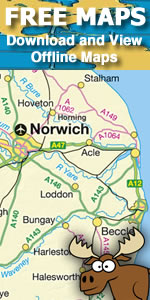 |
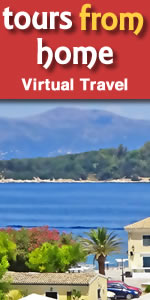 |
| |
|

